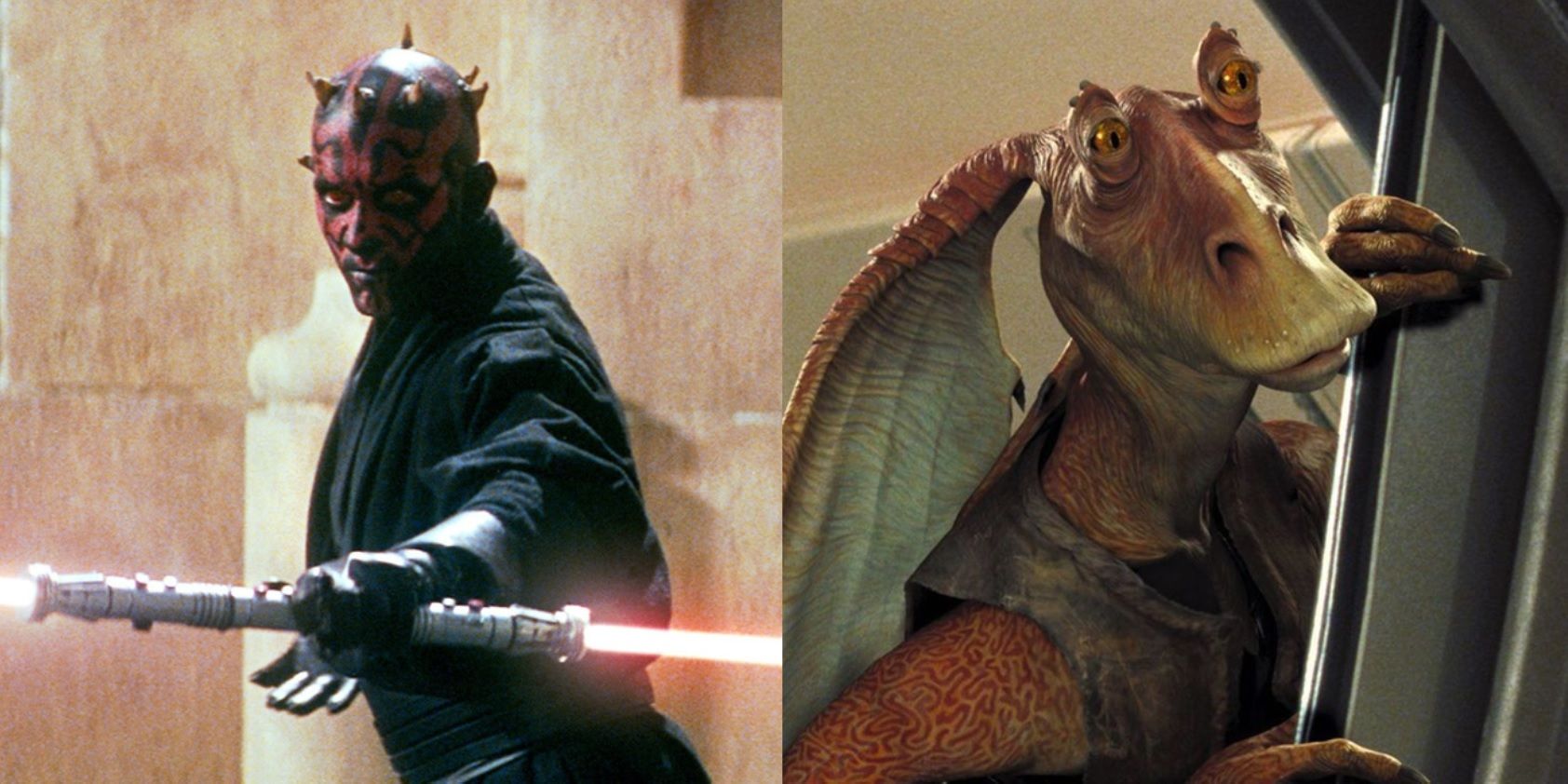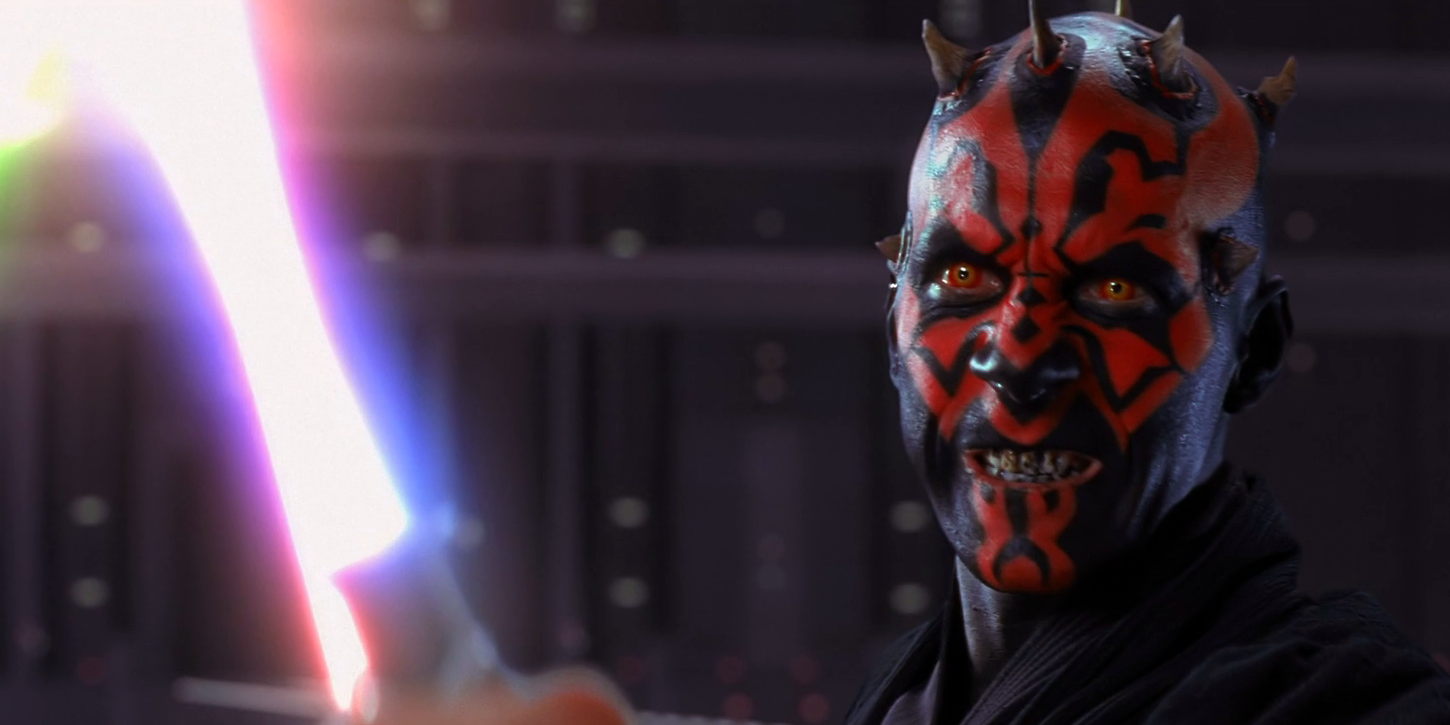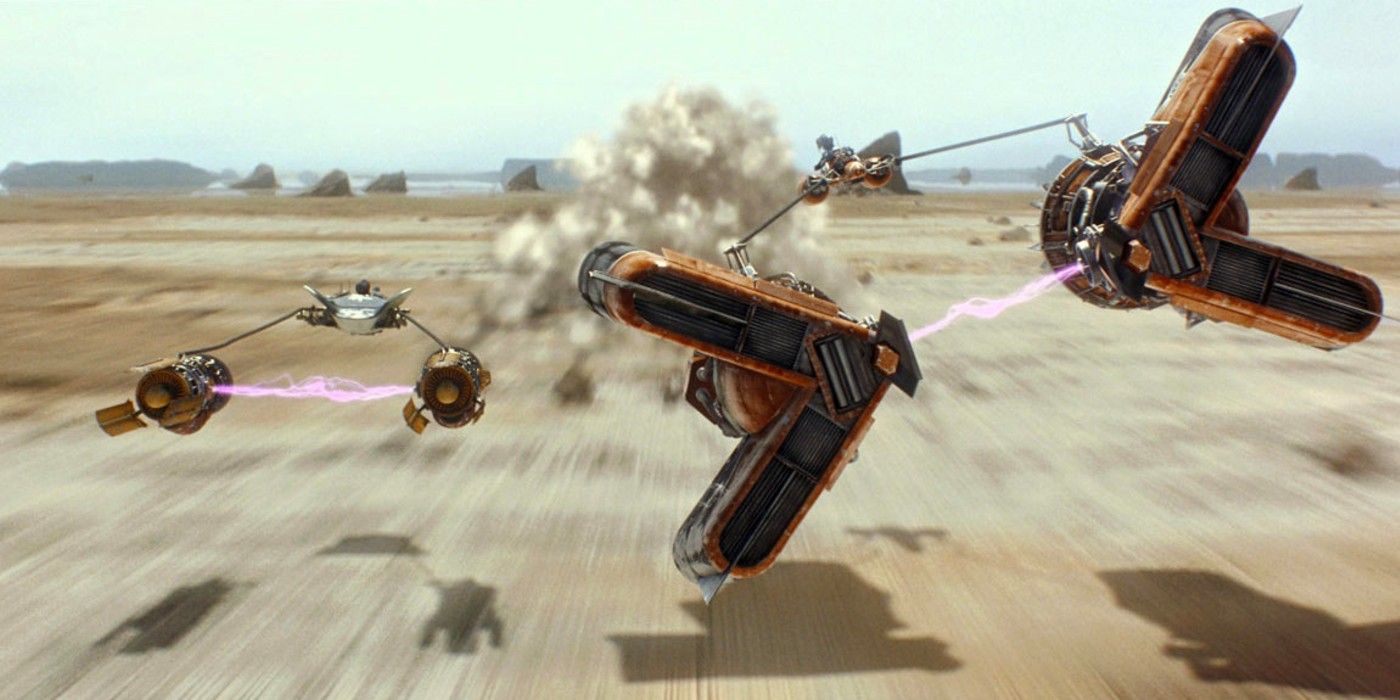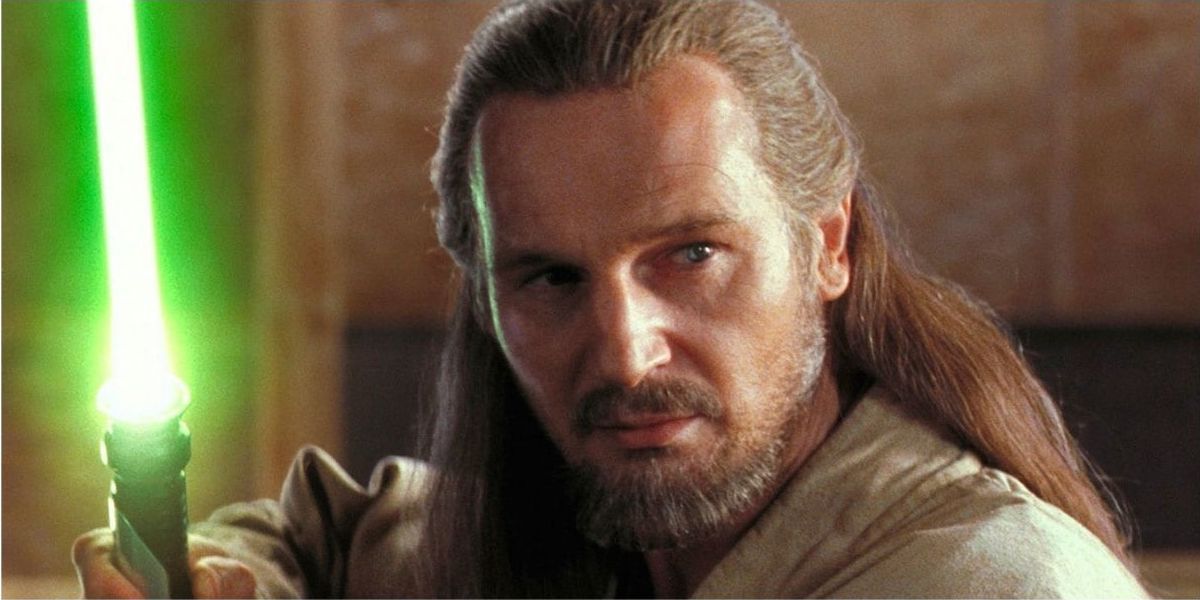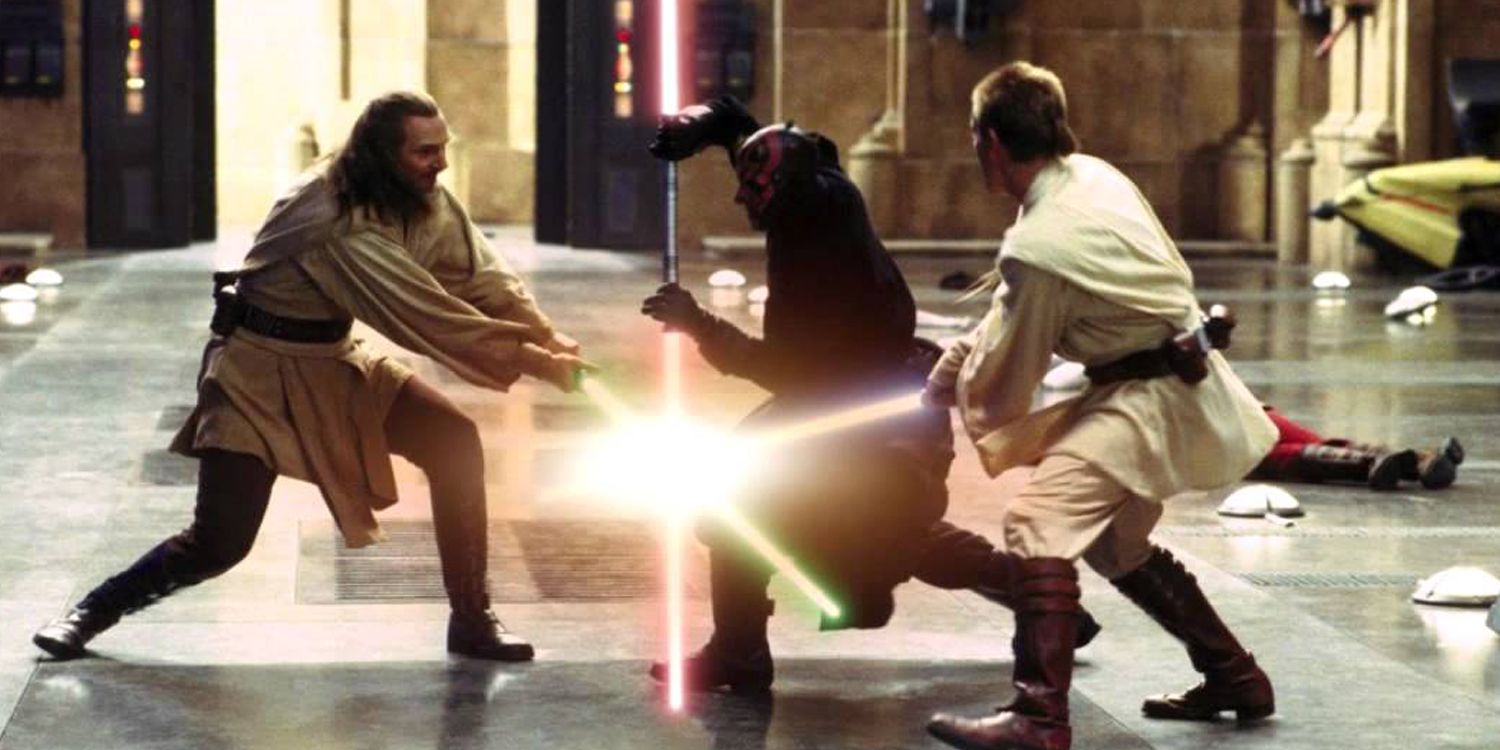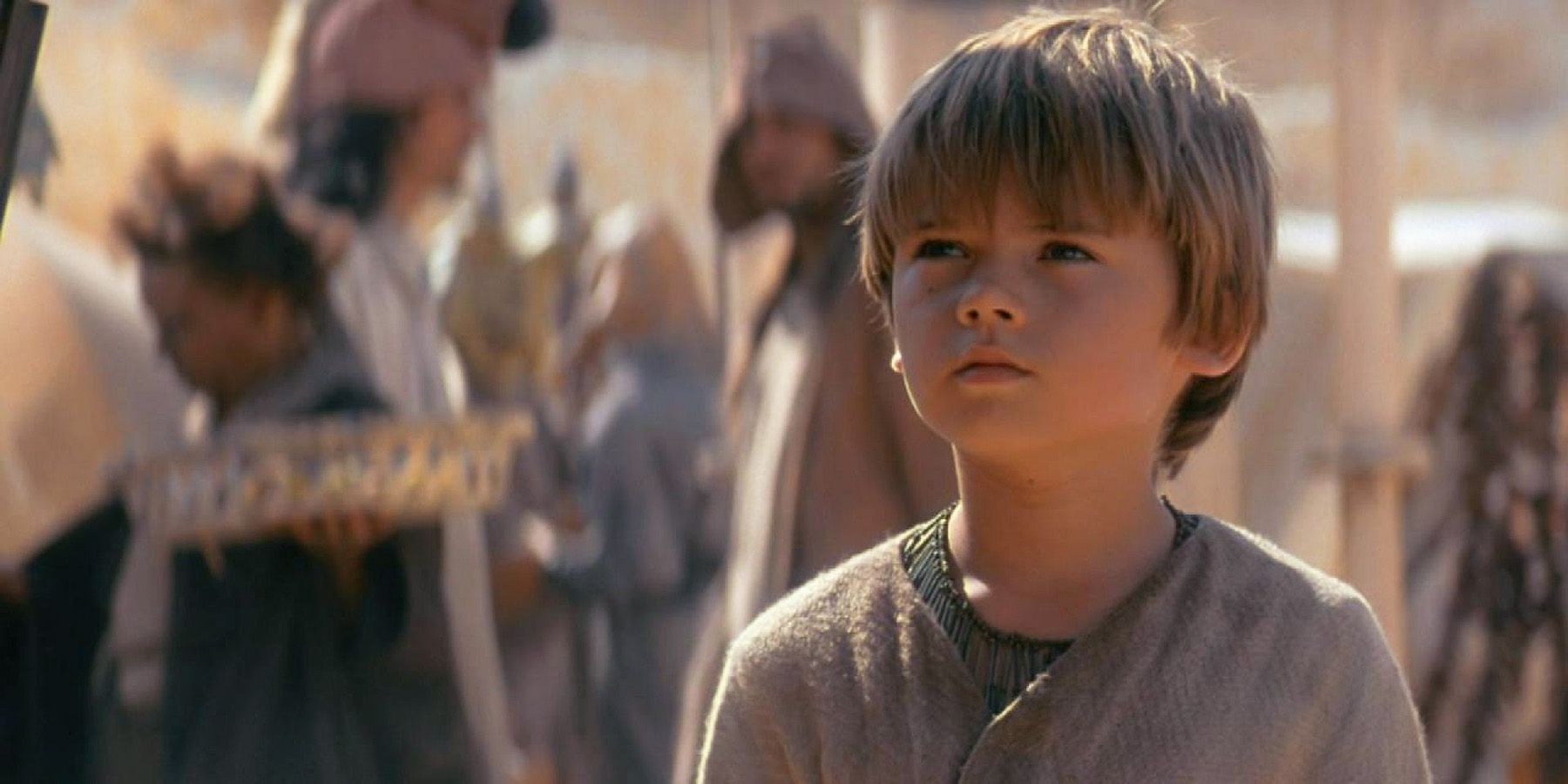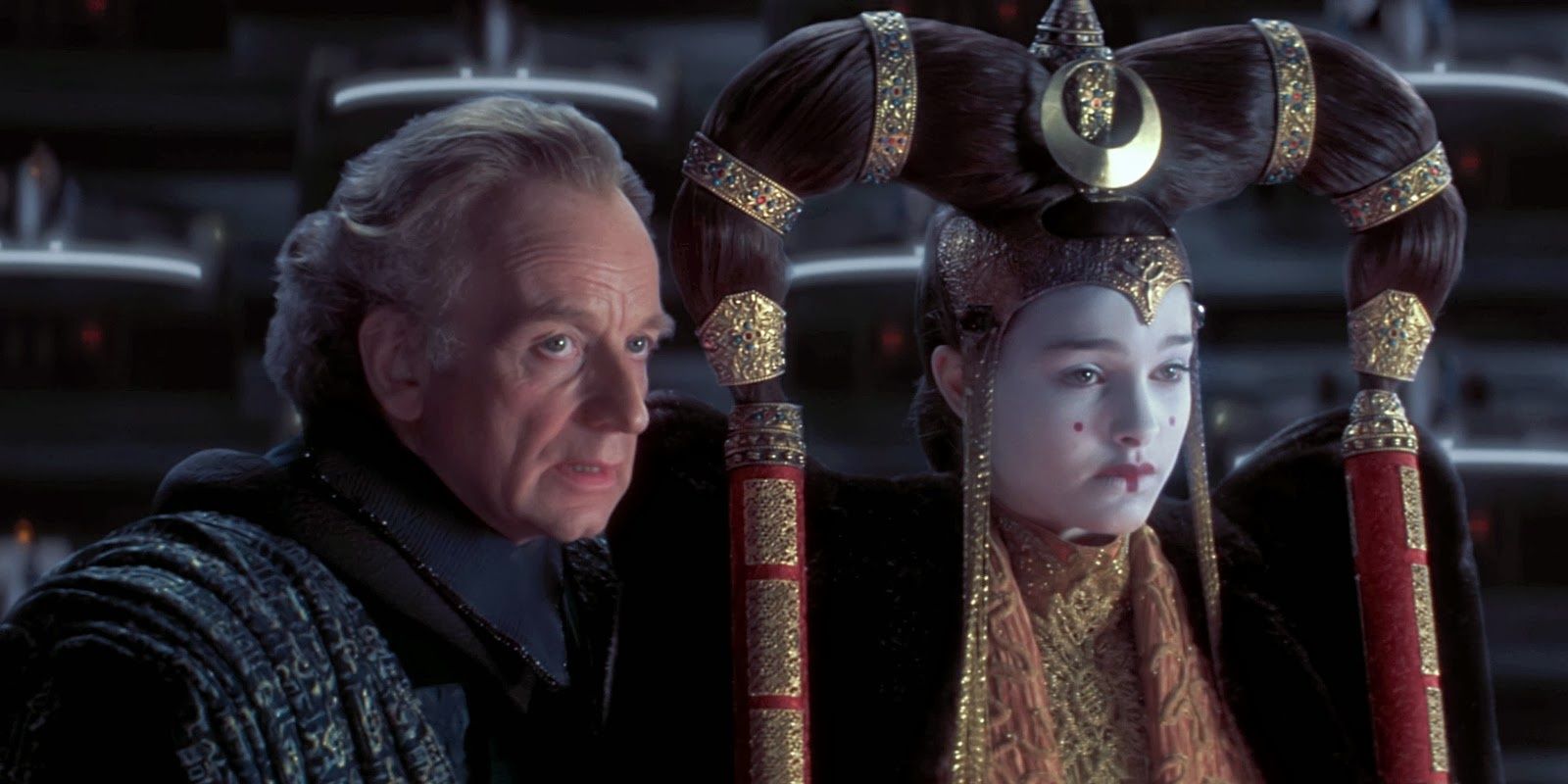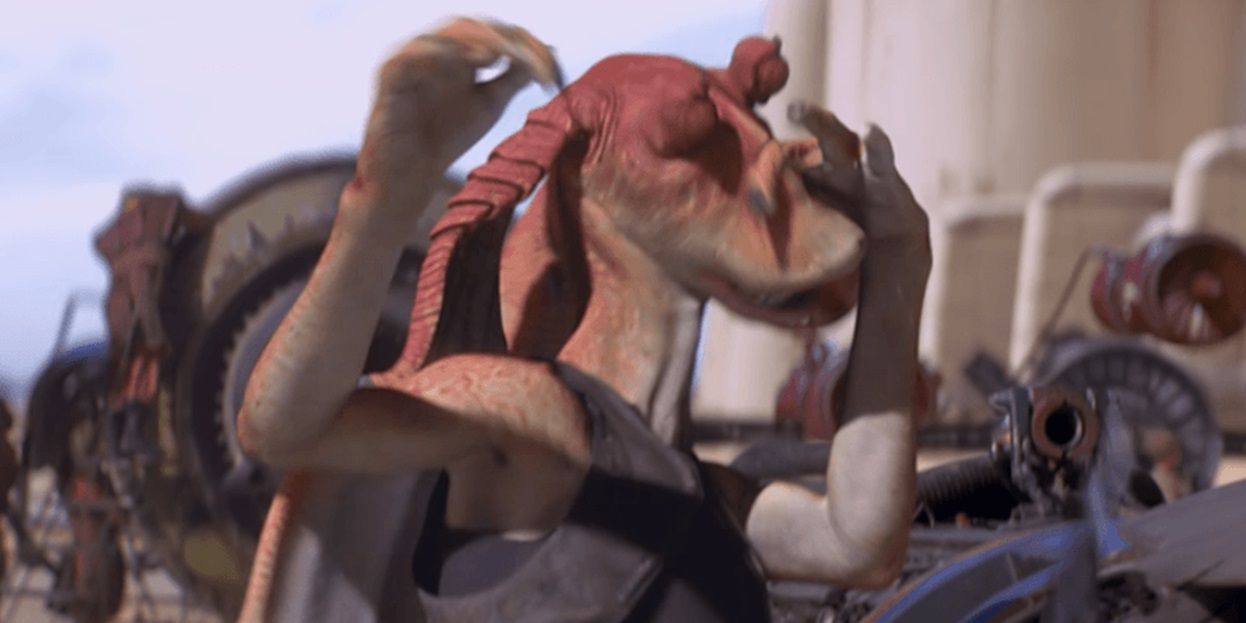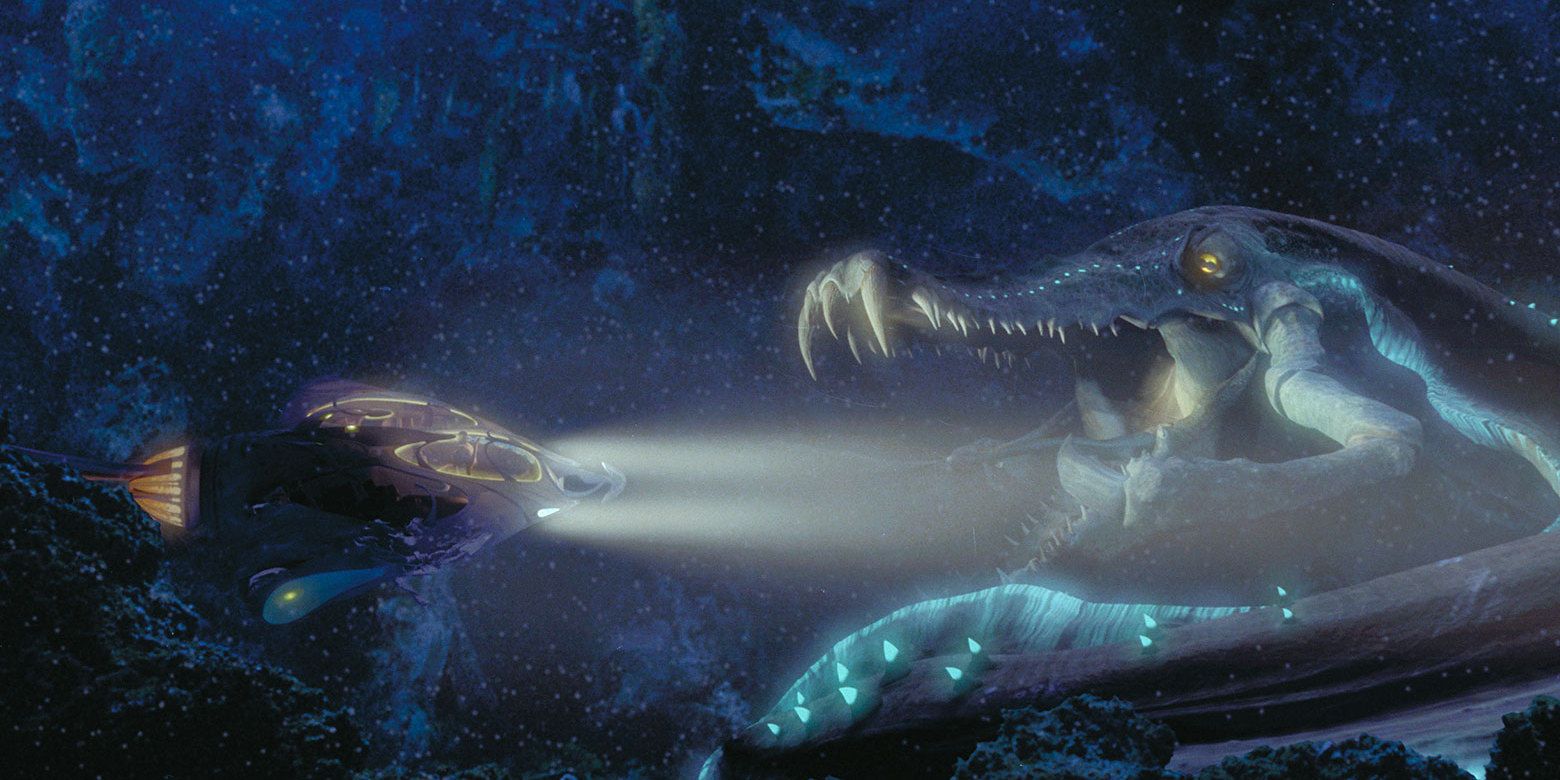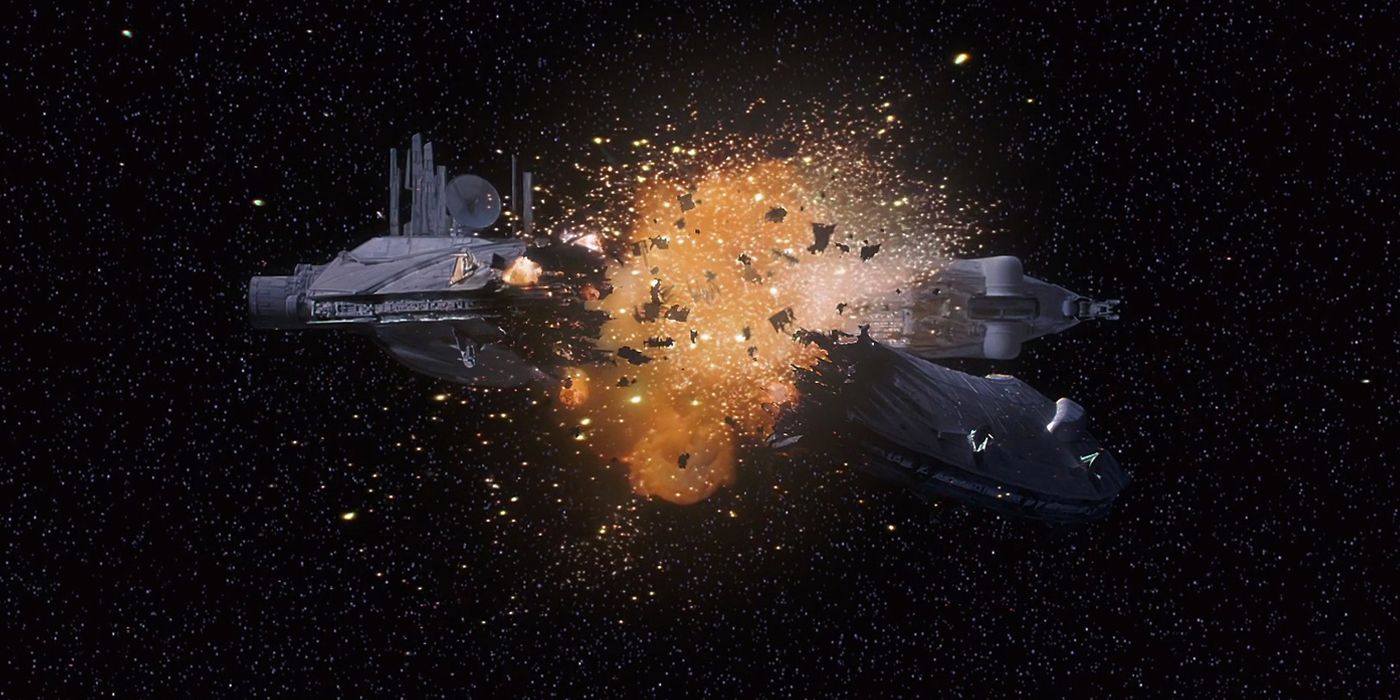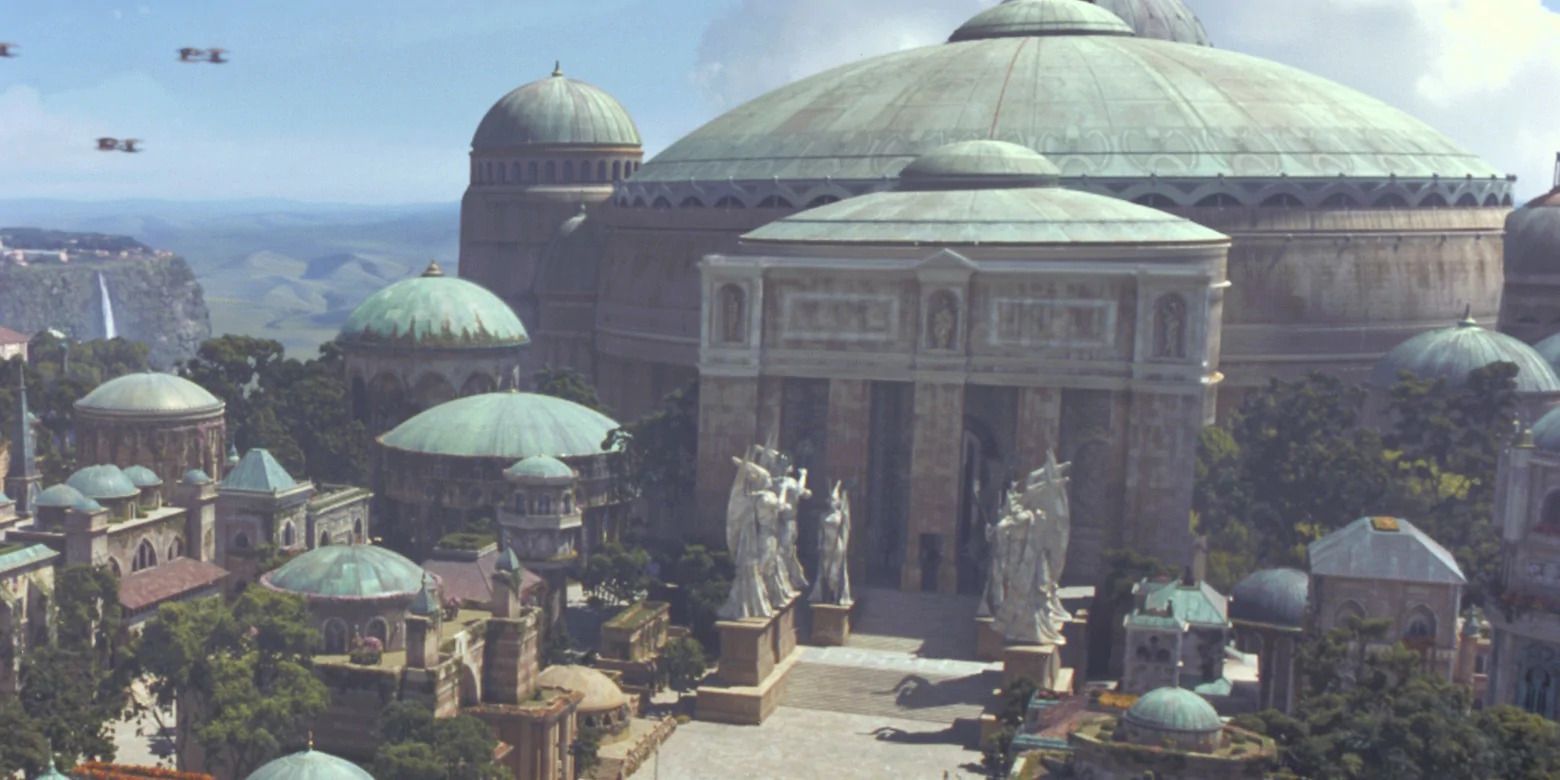George Lucas seemed untouchable after all three of the original Star Wars movies were met with widespread acclaim from both fans and critics and managed to stand the test of time as a trio of endlessly rewatchable masterpieces. But then, he kicked off the prequel trilogy with The Phantom Menace, the first of many wildly polarizing Star Wars movies.
The Phantom Menace received some of the worst reviews in the saga’s history and irreparably divided the fan base. A few aspects of the film were rightly criticized, like the dull trade disputes, but there are plenty of saving graces, like Darth Maul and the podracing sequence.
It’s Not As Bad As People Say
Darth Maul Managed To Be As Iconic And Fearsome As Vader
Lucas’ next installment of the Star Wars saga was burdened with replacing Darth Vader, one of the most iconic villains ever created, with an antagonist that was just as unforgettably sinister. As proven by the sequel trilogy’s villain, Kylo Ren, that’s a lot easier said than done.
Darth Maul, the demonic Sith Lord who takes on Qui-Gon and Obi-Wan in The Phantom Menace, managed to achieve the impossible. Maul is just as iconic and fearsome as Vader (and, thanks to expanded media, he’s just as surprisingly sympathetic, too).
The Podrace Is A Riveting Action Sequence
Just when the middle act of The Phantom Menace is starting to lull with Qui-Gon and co. hanging around the Skywalkers’ dusty Tatooine hometown a little too long, Lucas pulls one of the Star Wars saga’s greatest set-pieces out of the bag: the Boonta Eve Classic.
Anakin takes part in the podrace to win his own freedom. This sequence is riddled with nail-biting tension as Anakin’s closest rival, Sebulba, shows up to sabotage his racer.
Qui-Gon Is The Saga’s Best One-Off Character
From Jango Fett to General Grievous to the Sarlacc, there are plenty of iconic Star Wars characters who only appeared in one chapter of the Skywalkers’ story. But, arguably, the saga’s best one-movie character is Qui-Gon Jinn, the Jedi Master who initially discovers Anakin’s immense Force sensitivity and proclaims him to be the prophesized “chosen one.”
Considering his naivety is responsible for the return of the Sith and the downfall of the galaxy, Qui-Gon is surprisingly lovable. He’s the father figure that Anakin needed. When Qui-Gon is struck down by Maul in the heartbreaking finale, it paves the way for Palpatine to take his place and follow the young padawan’s career “with great interest.”
The “Duel Of The Fates” Is The Best Lightsaber Set-Piece
There are plenty of thrilling lightsaber duels in the Star Wars saga, from Obi-Wan’s explosive confrontation with Anakin in Revenge of the Sith to Luke’s long-awaited, ill-fated showdown with Vader in The Empire Strikes Back.
But arguably the most exhilarating, visually stunning, and emotionally engaging of them all is the duel that determines Anakin’s dark fate in The Phantom Menace, between Qui-Gon and Obi-Wan working in tandem (and eventually separated by a laser barrier) and a fearless, relentless Darth Maul.
The Phantom Menace Is A Great Origin Story For Anakin
Jake Lloyd’s cutesy portrayal of an eight-year-old Anakin was criticized when The Phantom Menace hit theaters, but the young actor did a fantastic job of subverting expectations and setting up the character’s inevitable transformation into Darth Vader.
The boy who would be Vader is introduced as a naive yet noble kid in the mold of his estranged son, far removed from the evil overlord he’s destined to become. The Phantom Menace’s origin story sets up the inevitability of Anakin’s tragic fate as a poignant dramatic device.
It Is As Bad As People Say
Trade Disputes Drag The Movie Down
The Simpsons’ spot-on spoof of The Phantom Menace pinned down the biggest problem with the movie. The opening crawl of Cosmic Wars: The Gathering Shadow, the Simpsons-verse version of The Phantom Menace, teases captivating storylines about “ambiguous tariff statutes,” “galactic export quotas,” and “amendments to existing trade policies.”
Lucas had to set up the corrupt government operated by the would-be Emperor, but the political discourse over intergalactic trade seriously drags down The Phantom Menace (especially in comparison to the fast-paced, action-packed fairy-tale storytelling of the original trilogy).
Jar Jar Binks’ Comic Relief Is Cringeworthy
Ahmed Best brings his all to the role of Jar Jar Binks, committing wholeheartedly to every slapstick bit that Lucas throws his way, and younger viewers love the character’s comedic sensibility.
But older audiences tend to watch these scenes through their fingers. Jar Jar’s humor is crass and scatological by nature, which more seasoned viewers recognize as a trite, played-out comic area.
The Action Scenes Are Few And Far Between
There are a few standout action sequences in The Phantom Menace – from the Boonta Eve Classic to the Duel of the Fates – but the action is too infrequent. When the movie does indulge in action, it’s thrilling; it just doesn’t do it often enough.
These set-pieces can be enjoyed on their own as YouTube clips, but they’re baked into the meandering plot of a two-and-a-quarter-hour movie with long action-free segments.
Yet Another Death Star
Lucas employed yet another Death Star device in The Phantom Menace. The whole final battle isn’t built around bombing a space station with the power to wipe out a planet, but there is a segment of Anakin piloting a starfighter and using it to blow up the droid command ship.
It’s not literally a Death Star, but it is a nefarious space station that the plucky, bright-eyed hero destroys. This was the third (and still not the last) Death Star to be blown up in the final battle of a Star Wars movie.
Overuse Of Primitive CG Effects
There was no way to gauge how much CGI was too much CGI when The Phantom Menace was made, because Lucas had to pioneer CGI technology just to be able to visualize the concepts he’d cooked up for the prequel story.
Now that CGI has engulfed the blockbuster landscape and that line has been drawn, The Phantom Menace’s CGI seems excessive. The effects are groundbreaking, but before Hollywood had quite figured out how much CGI was appropriate to use in a movie, Lucasfilm erred on the side of “the more CGI, the better.”

